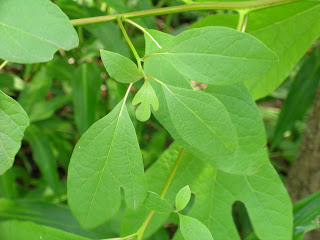


Cochineal is a a scale insect that eats only Opuntia. It also produces a red dye that is designed to deter predators. Humans, however use red dye to color their world. The Maya and Aztec peoples used it for thousands of years. When the Spanish arrived in the 15th century, they were bewitched by the deep red color and it became a big export. Cochineal was used the color the red stripes on the US flag and the red coats of the British army. More recently, cochineal was used to make McDonald's milkshakes look pink and Compari look red. Some companies like to use insect dyes because they are natural. But more people are allergic to cochineal than to coal tar dyes. So many companies use artificial dyes.
Opuntia can be used to get drunk. The fruits, or tunas, can be used to flavor cactus margaritas. They can also be used to cure a hangover. An extract from the pads, or nopales, inhibits the production of inflammatory mediators, which in turn reduces the symptoms such as dry mouth, nausea and lack of appetite. You can even buy capsules!

Some species may also be useful in treating diabetes.
Opuntia species are native to the new world from Canada to South America. One species is endangered in Florida, another is an invasive exotic in Australia. The cactus moth, Cactoblastis cactorum, has been used to control Opuntia in Australia. The same moth is considered a threat to Opuntia species in Florida and Mexico.
At the UC Botanical Garden, there are several species of Opuntia, some in the New World Desert, some in the California section. I didn't see any in bloom today, but some of the fruits are ripening.
(intoxicating plants) (Insects)



 I made the brew yesterday: yeast, beer and blended grapes. It fermented all night, sitting on a heating pad. Then I put it in a wagon and rolled it to the crop garden at the UC Botanical Garden. Then I went to book group, hoping some butterflies would find it and get drunk. At book group I saw a buckeye and a termite fluttered over the table for a moment, while everyone admired the glittering wings. After book group, I took the butterfly watchers to the mashed grapes. But we only saw wasps. Oh well.
I made the brew yesterday: yeast, beer and blended grapes. It fermented all night, sitting on a heating pad. Then I put it in a wagon and rolled it to the crop garden at the UC Botanical Garden. Then I went to book group, hoping some butterflies would find it and get drunk. At book group I saw a buckeye and a termite fluttered over the table for a moment, while everyone admired the glittering wings. After book group, I took the butterfly watchers to the mashed grapes. But we only saw wasps. Oh well.














































